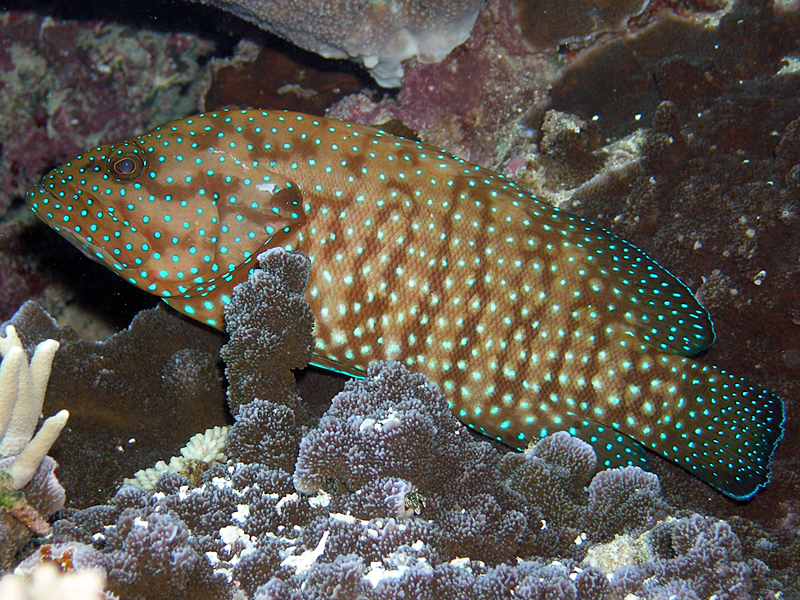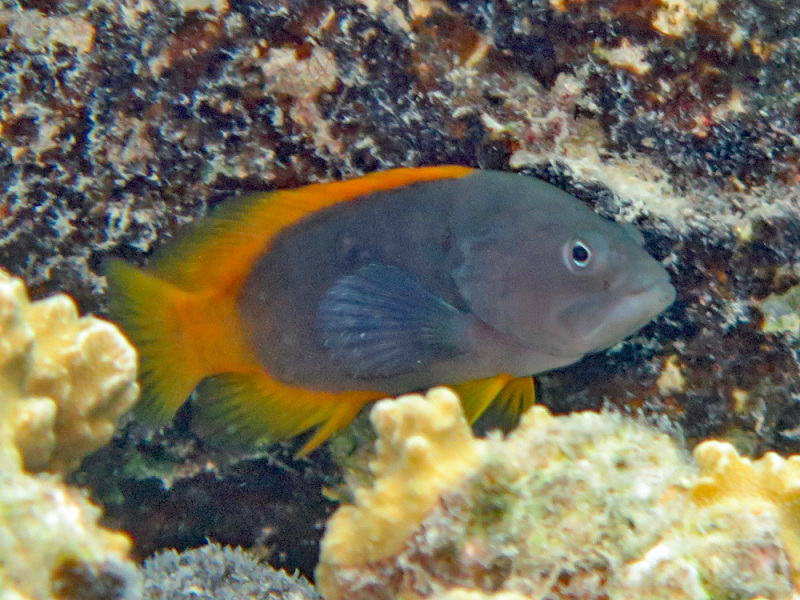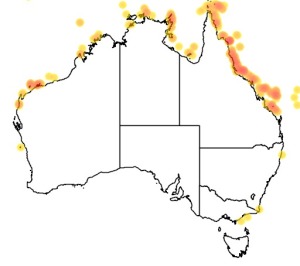Colours
Distinguishing features
A small to medium sized rock cod with a mottled reddish brown body, covered in fine blue dots. The juvenile is grey with a yellow dorsal, anal, and caudal fin. During the daytime usually seen singly resting in thick coral or near caves.
Size
- Up to 40 cm (Standard length)
Depth range
- Depth range data is not yet available.
Synonyms
Distribution
Distribution and habitat preferences
Areas of good coral cover in lagoons and other sheltered habitats.
Can be found in most locations around the island.
Behaviour
The Bluespotted Rockcod is likely to be a diandric protogynous hermaphrodite, based on known patterns of sexual devlepment in other species of Cephalopholis. Juvenile fishes can be male or female, and they retain these sexes until maturity. Additionally, mature females may change sex to become functional males. Large dominant males maintain and defend territories on the reef, containing a harem of females, juveniles and reproductively inactive adults. This species is an ambush predator, lying in wait for small fishes to venture close to its hiding place, before making a rapid attacking rush.
Web resources
References
- Abdulla, A. (2004). Predator-prey interactions in coral reef fish: the implications of predation risk on the behaviour and growth of prey, Ph.D. thesis, James Cook University. LIRS catalog number 1296.
- Becker, J.H.A. (2006). Interactions between cleaner shrimp and their client fishes on coral reefs, Ph.D. thesis, University of Queensland. LIRS catalog number 978.
- Becker, J.H. and A.S. Grutter (2004). Cleaner shrimp do clean, Coral Reefs, 23: 515-520. LIRS catalog number 894.
- View all references




